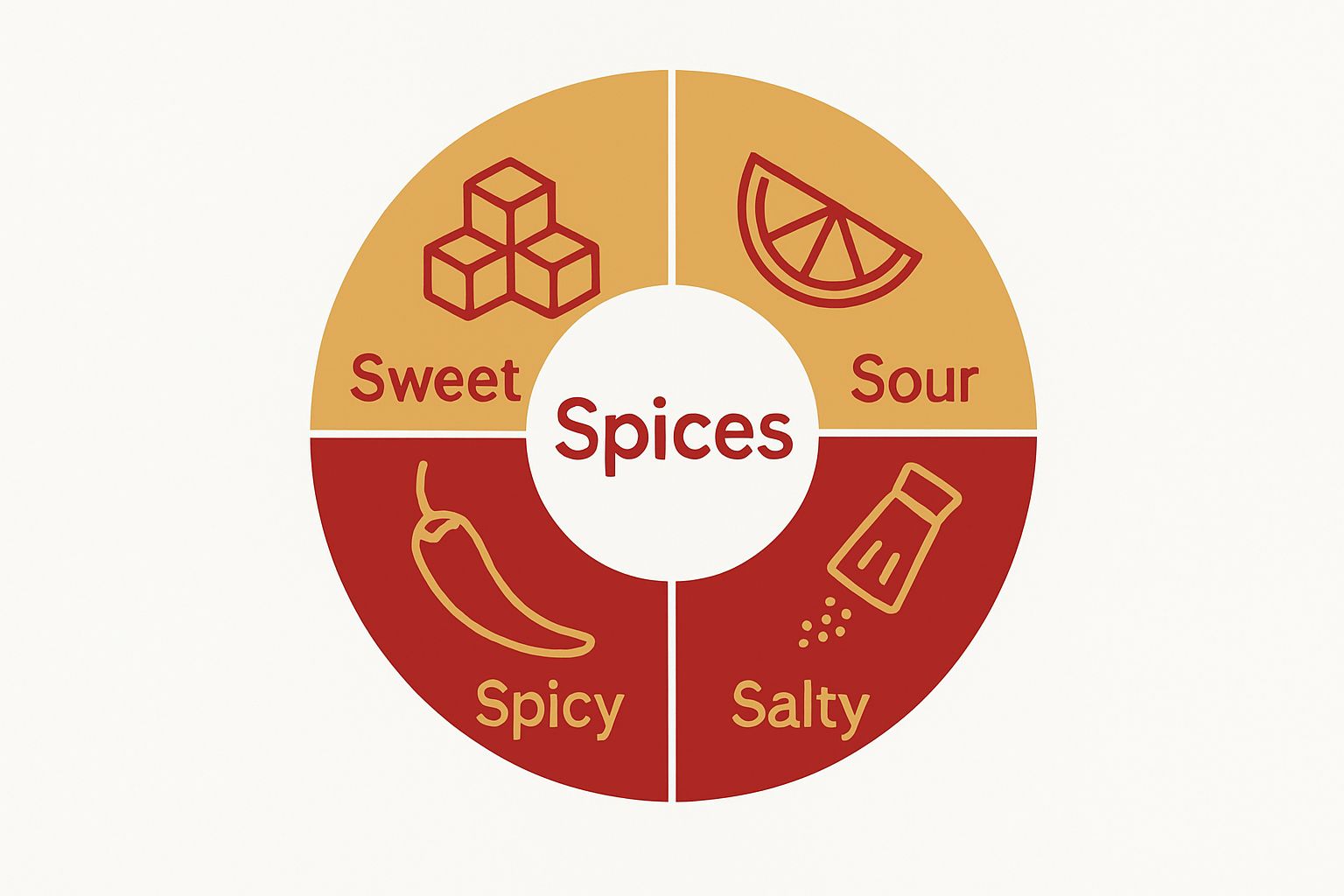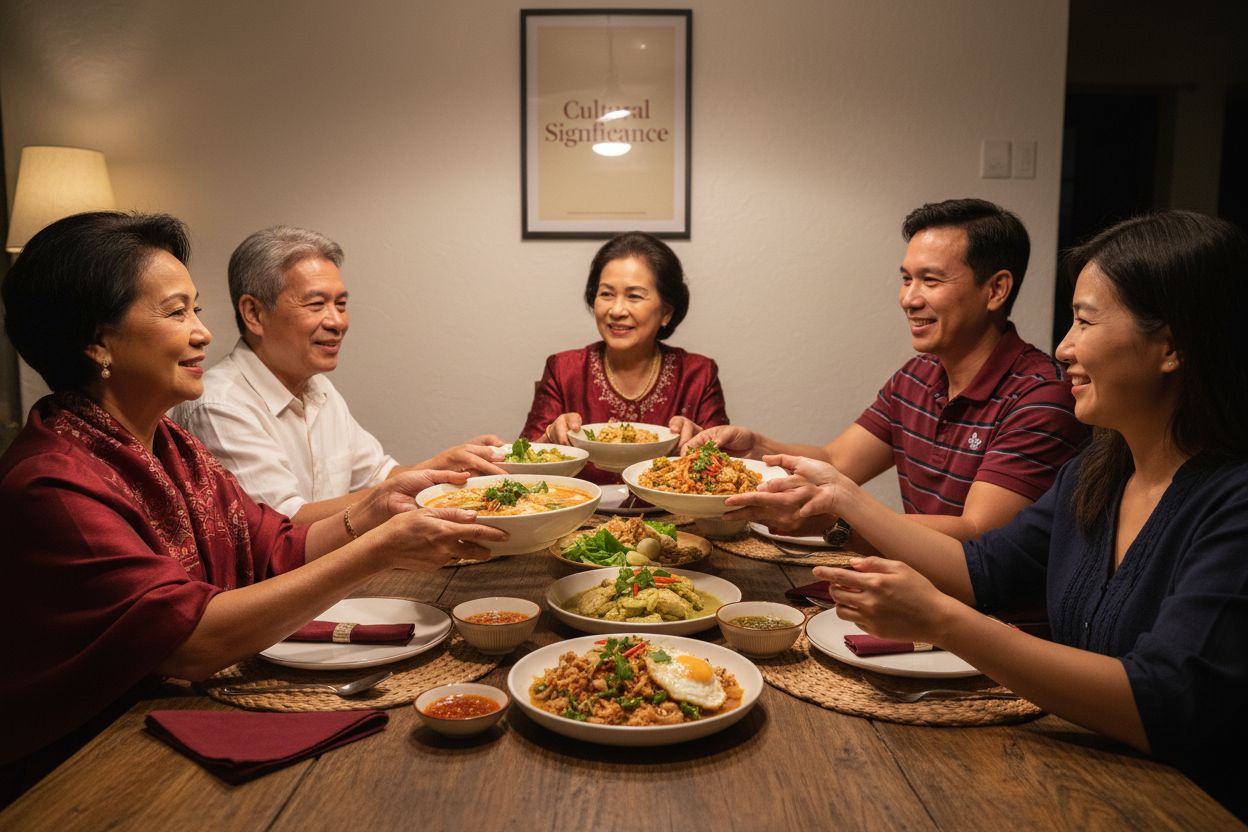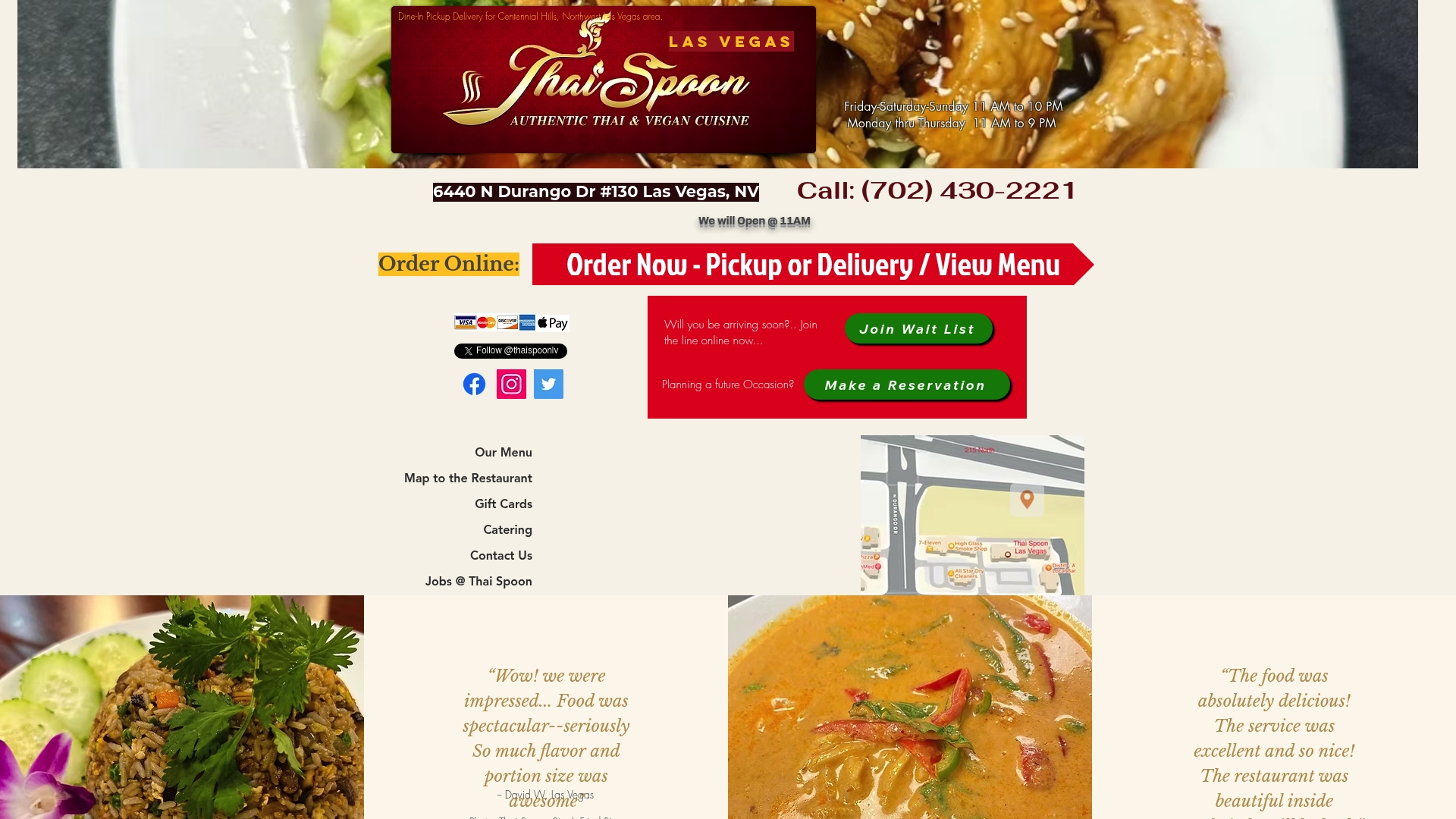Understanding the Role of Spice in Thai Cuisine
- mail469793
- Oct 9
- 9 min read

Thai cuisine is famous for its bold and unforgettable flavors, built on a foundation of spices that stun the senses. Get this. Bird’s eye chilies can be up to 100 times spicier than a jalapeño, yet they’re just one piece of the puzzle. Those fiery peppers are only the start because in Thai food, it’s the blend of lemongrass, galangal, and kaffir lime leaves that creates a taste experience you won’t find anywhere else.
Table of Contents
Quick Summary
Takeaway | Explanation |
Spices are the core of Thai flavor. | Thai cuisine relies heavily on spices like lemongrass, galangal, and kaffir lime leaves for unique taste experiences. |
Spices balance heat and taste intricately. | The culinary art of Thai cooking balances heat from chilies with flavors such as sweet, sour, and salty for complex dishes. |
Thai spices offer significant health benefits. | Ingredients like turmeric and ginger enhance dishes not only for flavor but also for their medicinal properties, promoting overall wellness. |
Cultural context shapes spice usage. | Each region’s spice profile reflects historical influences and local agriculture, telling rich cultural stories through food. |
Adjusting spice levels indicates interpersonal understanding. | The ability to modify spice levels in dishes showcases emotional intelligence and respect for individual taste preferences. |
What Are the Key Spices in Thai Cuisine?
Spices are the heart and soul of Thai cuisine, transforming ordinary ingredients into extraordinary culinary experiences. The role of spice in Thai cuisine goes far beyond mere seasoning - these potent flavor enhancers create complex, vibrant taste profiles that define the region’s distinctive cooking style.
The Essential Spice Foundations
Thai cuisine relies on a remarkable collection of spices that deliver multilayered sensory experiences. Learn more about signature Thai spices to understand their profound impact. The most prominent spices include:
Lemongrass: A citrusy, aromatic herb that provides a bright, zesty undertone
Galangal: Similar to ginger but with a sharper, more peppery flavor profile
Kaffir Lime Leaves: Delivering an intense, fragrant citrus essence
These spices work synergistically to create depth, complexity, and balance in traditional Thai dishes. Each ingredient brings unique characteristics that contribute to the cuisine’s renowned flavor complexity.
This table outlines the core spices in Thai cuisine and their primary flavors and health benefits as discussed in the article, helping you quickly understand their significance in both taste and wellness.
Spice | Primary Flavor/Characteristic | Traditional Health Benefit |
Lemongrass | Citrusy, aromatic, bright | Antibacterial and antifungal |
Galangal | Peppery, sharp, earthy | Supports digestion |
Kaffir Lime Leaves | Intense, fragrant citrus essence | Enhances immune function |
Turmeric | Warm, earthy, mild bitterness | Anti-inflammatory effects |
Ginger | Spicy, fresh, pungent | Relieves nausea, aids digestion |
Chili Peppers | Fiery, sharp, intense heat | Boosts metabolism, antioxidant effects |
Basil (Thai) | Sweet, slightly peppery, aromatic | Provides micronutrients |
Balancing Heat and Flavor
Understanding spice in Thai cuisine means recognizing the delicate balance between heat, aromatics, and nuanced flavor profiles. Chili peppers play a crucial role, with varieties like bird’s eye chili introducing intense, sharp heat that distinguishes Thai cooking from other Southeast Asian culinary traditions.
The strategic use of spices allows Thai chefs to create harmonious dishes that stimulate multiple taste sensations simultaneously.
From the warming undertones of turmeric to the sharp bite of fresh ginger, each spice serves a specific purpose beyond simple seasoning.
These carefully selected spices do more than enhance taste - they represent a cultural narrative, connecting contemporary cooking with centuries of culinary tradition. Their role extends beyond flavor, embodying the intricate relationship between food, history, and regional identity in Thai cuisine.
Why Is Spice Essential to Thai Flavor Profiles?
Spice is not merely an ingredient in Thai cuisine but a fundamental language of flavor communication. Explore the intricacies of Thai taste profiles to understand how these remarkable combinations transcend simple seasoning and become a complex culinary art form.
The Sensory Symphony of Spices
Thai flavor profiles are distinguished by their remarkable ability to simultaneously activate multiple taste sensations. Unlike other culinary traditions that focus on single dominant flavors, Thai cuisine creates an intricate dance of taste experiences:
Sweet: Balancing heat with subtle sugar undertones
Sour: Adding brightness and complexity through ingredients like tamarind
Spicy: Introducing dynamic heat that energizes the palate
Salty: Providing depth and enhancing overall flavor integration
This multilayered approach means that each bite delivers a nuanced, dynamic experience where no single flavor overwhelms the others. The strategic combination of spices creates a harmonious interaction that keeps diners engaged and excited.

Cultural and Nutritional Significance
Spices in Thai cuisine represent more than culinary technique they embody a profound cultural philosophy of balance and holistic wellness. Traditional Thai cooking views spices as medicinal ingredients with healing properties, transforming meals into opportunities for physical and spiritual nourishment.
The careful selection and combination of spices reflect generations of culinary wisdom. Ingredients like turmeric, known for anti-inflammatory properties, and ginger, recognized for digestive benefits, showcase how Thai cuisine integrates nutrition and flavor. Each spice tells a story of regional agriculture, cultural exchange, and deep respect for ingredient potential.
Through this intricate spice methodology, Thai cuisine achieves something extraordinary: creating dishes that are simultaneously complex, healing, and profoundly delicious. The role of spice becomes a bridge connecting tradition, health, and sensory pleasure.
How Spices Contribute to Health Benefits in Thai Dishes
Thai cuisine represents far more than a delightful culinary experience - it is a profound approach to nutrition that transforms ingredients into powerful wellness tools. Discover our guide to understanding Thai menu selections to appreciate how each spice contributes to holistic health.
The Medicinal Power of Traditional Spices
Traditional Thai cooking views spices not just as flavor enhancers but as natural medicines with remarkable healing properties. According to research published in the National Institutes of Health, many spices used in Thai cuisine demonstrate significant therapeutic potential:
Turmeric: Contains curcumin, a powerful anti-inflammatory compound
Ginger: Supports digestive health and reduces nausea
Chili Peppers: Boost metabolism and provide antioxidant protection
Lemongrass: Exhibits antibacterial and antifungal characteristics
These spices work synergistically, creating a natural pharmacy within everyday meals that supports overall wellness.
Immune System and Metabolic Support
The strategic combination of spices in Thai dishes goes beyond immediate flavor, offering substantial metabolic and immunological benefits. Ingredients like galangal and kaffir lime leaves are rich in compounds that enhance cellular protection and support immune function.
Spices in Thai cuisine activate multiple physiological responses simultaneously. The heat from chili peppers stimulates circulation, while aromatic herbs like basil and cilantro provide essential micronutrients. This holistic approach transforms eating from a mere nutritional requirement into a comprehensive health strategy.
By integrating these powerful ingredients, Thai cuisine demonstrates how food can be both a sensory pleasure and a sophisticated wellness intervention. Each carefully selected spice represents centuries of traditional knowledge about human health and nutrition.
The Cultural Significance of Spice in Thai Dining
Spice in Thai culture transcends mere culinary technique and becomes a profound expression of social connection and historical narrative. Explore the rich tapestry of Thai cuisine culture to understand how spices weave together community, tradition, and identity.
Spice as Social Communication
In Thai dining culture, spices serve as a sophisticated language of hospitality and interpersonal understanding. According to research on culinary anthropology, spice preferences reflect deep social dynamics where sharing and respecting individual taste becomes a form of emotional intelligence:
Personal Tolerance: Recognizing each individual’s unique spice threshold
Communal Adaptation: Modifying dishes to accommodate group preferences
Emotional Connection: Using spice as a mechanism of care and consideration
Each spice selection represents a nuanced negotiation of comfort, respect, and shared experience. The act of adjusting spice levels becomes an intimate dialogue about mutual understanding.
Historical Roots and Regional Identity
Spices in Thai cuisine tell complex stories of geographic trade, cultural exchange, and ancestral wisdom. Different regions developed distinctive spice combinations that reflected local agricultural capabilities, historical migrations, and interactions with neighboring cultures.
Northern Thai cuisine, for instance, demonstrates different spice profiles compared to southern coastal regions, with each area developing unique flavor narratives. These variations are not just culinary choices but living historical documents that preserve cultural memory through taste.
Through spices, Thai dining transforms from a mere eating experience into a powerful medium of cultural preservation, social bonding, and collective storytelling. Every carefully crafted dish becomes a bridge connecting past traditions with present communal experiences.

Exploring Regional Variations in Thai Spicy Food
Thai cuisine represents a vibrant mosaic of regional flavors, where spiciness transforms from a singular concept into a complex cultural expression. Discover our comprehensive Thai cuisine cooking guide to understand how geography and tradition shape spice experiences across different regions.
Northern Versus Southern Spice Traditions
Research on Southeast Asian culinary anthropology reveals fascinating distinctions in spice approaches across Thailand’s diverse landscapes. Northern Thai cuisine, influenced by Laotian and Burmese culinary traditions, tends to feature milder, more herbaceous heat profiles:
Chiang Mai Region: Focuses on subtle, aromatic spices like mild green chilies
Northeastern Isaan Area: Incorporates sharper, more direct heat
Mountain Provinces: Uses dried chilies and complex spice blends
In contrast, Southern Thai cuisine embraces more intense, immediate spice experiences. Coastal regions utilize fresher, more potent chili varieties that deliver immediate, sharp heat sensations.
Ecological Influences on Spice Complexity
Spice variations are not merely culinary choices but direct reflections of local ecological conditions. Coastal southern provinces have access to different pepper varieties compared to mountainous northern regions, creating distinct flavor landscapes.
Below is a comparison table highlighting key regional differences in Thai spice traditions, summarizing the unique spice profiles and influences in northern and southern Thai cuisine.
Region | Spice Profile | Influences | Typical Chili Usage |
Northern Thailand | Milder, herbaceous, aromatic | Laotian and Burmese culinary traditions | Mild green chilies, dried chili blends |
Northeastern Isaan | Sharper, more direct heat | Northeast Thai/Isaan agricultural heritage | Direct heat from local chilies |
Mountain Provinces | Complex spice blends, use of dried chilies | Isolated mountain environments | Dried chili and complex blends |
Southern Thailand | Intense, immediate, fresh spice | Coastal trade, Malay and Indian influences | Fresh, potent chili varieties |
Coastal Regions | Fresh, sharp heat, high spice intensity | Access to sea and trade route ingredients | Immediate, sharp heat from fresh chilies |
The proximity to trading routes, historical migration patterns, and local agricultural capabilities profoundly influence each region’s spice profile. What emerges is not just a culinary tradition but a living, dynamic representation of Thailand’s rich cultural diversity.
Through these regional spice variations, Thai cuisine demonstrates an extraordinary ability to transform similar ingredients into dramatically different sensory experiences, celebrating the country’s remarkable culinary complexity.
Experience the True Depth of Thai Spice at Thai Spoon Las Vegas
Have you ever wondered how the vibrant complexity of Thai spices can truly elevate your dining experience? The article “Understanding the Role of Spice in Thai Cuisine” highlights how choosing authentic, expertly balanced spices is often the key challenge in recreating genuine Thai flavors. Many diners struggle to find meals that offer the right blend of heat, aromatics, and rich cultural tradition. At Thai Spoon Las Vegas, you can savor dishes crafted by chefs who understand the artistry of balancing sweet, sour, spicy, and salty profiles, using fresh ingredients and time-honored spice techniques for every plate served.

Stop missing out on unforgettable taste. Whether you crave a classic like Pad Thai, a warming Yellow Curry, or a bold meal such as Steak Fried Rice, our menu brings you the bold flavors discussed in the article, including vegan and gluten-free options. Order online for pickup or delivery today, or explore our menu in person to see why locals trust us for authentic Thai cuisine and a welcoming community atmosphere. Take the first step towards a more flavorful dining adventure now by visiting Thai Spoon Las Vegas.
Frequently Asked Questions
What are the key spices used in Thai cuisine?
Thai cuisine prominently features spices like lemongrass, galangal, and kaffir lime leaves, which contribute to its distinctive flavor profiles.
How do spices contribute to health benefits in Thai dishes?
Spices such as turmeric and ginger not only enhance flavor but also provide health benefits like anti-inflammatory properties and digestive support, acting as natural medicines in meals.
What makes Thai flavor profiles unique compared to other cuisines?
Thai cuisine balances multiple taste sensations, including sweet, sour, spicy, and salty, often using chili peppers and other spices to create multilayered, harmonious dishes.
How do regional variations affect spice usage in Thai cuisine?
Different regions in Thailand use distinctive spice combinations influenced by local agricultural conditions, cultural exchanges, and historical trade, creating unique flavor narratives in each area.
Recommended











Comments